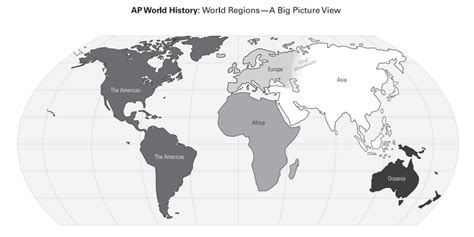Prepare for your AP World History exam with this comprehensive quizlet covering key concepts from Unit 2.1.
Mesopotamia: Cradle of civilization, located between the Tigris and Euphrates rivers.
Developed cuneiform, the earliest known writing system.
Established city-states such as Ur and Babylon.
Egypt: Situated along the Nile River in North Africa.
Known for its pharaohs, pyramids, and advanced mathematics and astronomy.
Developed hieroglyphics, another early form of writing.
India: Located in South Asia along the Indus River.
Known for the Harappan civilization, which developed advanced urban planning and commerce.
Developed the decimal system and concept of zero.
China: Situated in East Asia along the Yellow River.
Known for the Shang dynasty, which developed bronze metallurgy and the oracle bone script.
Also developed the concept of the Mandate of Heaven.
Mesopotamia: Polytheistic, with gods associated with natural forces.
Developed the Epic of Gilgamesh, an early work of literature exploring themes of mortality and the search for meaning.
Egypt: Polytheistic, with gods such as Ra (sun), Osiris (underworld), and Isis (fertility).
Developed the concept of the Book of the Dead, a guide to the afterlife.
India: Developed Hinduism, a complex religion with multiple deities and the concept of reincarnation.
Also developed Buddhism, a philosophy emphasizing non-violence and the importance of enlightenment.
China: Developed Confucianism, a philosophy focusing on social order, respect for authority, and ethical behavior.
Also developed Taoism, a philosophy emphasizing the importance of balance and harmony in nature.
Mesopotamia: Developed centralized governments and city-states ruled by kings or emperors.
Examples include the Akkadian and Babylonian empires.
Egypt: Ruled by a pharaoh, who held both religious and political power.
Expanded its territory through conquests and military campaigns.
India: Developed the Maurya Empire under Chandragupta Maurya, which unified much of the subcontinent.
Also saw the rise of the Gupta Empire, a period of cultural and economic prosperity.
China: Developed the Qin dynasty under Qin Shi Huang, who established a centralized empire and built the Great Wall of China.
Later saw the rise of the Han dynasty, which expanded China’s territory and developed advanced technologies.
Tables:
Civilization Important Cities Rulers/Leaders Contributions
Mesopotamia Ur, Babylon
Sargon, Hammurabi
Cuneiform, Epic of Gilgamesh
Egypt Memphis, Thebes
Pharaohs (e.g., Khufu, Tutankhamun)
Pyramids, Hieroglyphics, Book of the Dead
India Harappa, Mohenjo-Daro
Chandragupta Maurya
Harappan civilization, Hinduism, Buddhism
China Shang, Zhou
Qin Shi Huang
Bronze metallurgy, Oracle bone script, Great Wall of China
Civilization Gods/Goddesses Religious Beliefs Philosophy
Mesopotamia Marduk, Ishtar
Polytheistic, associated with natural forces
Egypt Ra, Osiris, Isis
Polytheistic, with a focus on the afterlife
India Brahma, Vishnu, Shiva
Hinduism (reincarnation), Buddhism (non-violence, enlightenment)
China None (Confucianism, Taoism)
Confucianism (social order), Taoism (harmony, balance)
Civilization Government Type Major Empires Important Rulers
Mesopotamia City-states, empires
Akkadian, Babylonian
Sargon, Hammurabi
Egypt Monarchy
Old, Middle, New Kingdoms
Pharaohs (e.g., Khufu, Tutankhamun)
India Empires
Maurya, Gupta
Chandragupta Maurya, Ashoka
China Centralized empire
Qin, Han
Qin Shi Huang, Liu Bang
Civilization Key Technological/Cultural Developments
Mesopotamia Cuneiform, wheel, sailboat
Egypt Pyramids, hieroglyphics, mummification
India Decimal system, concept of zero, yoga
China Bronze metallurgy, oracle bone script, Great Wall of China
Post navigation

